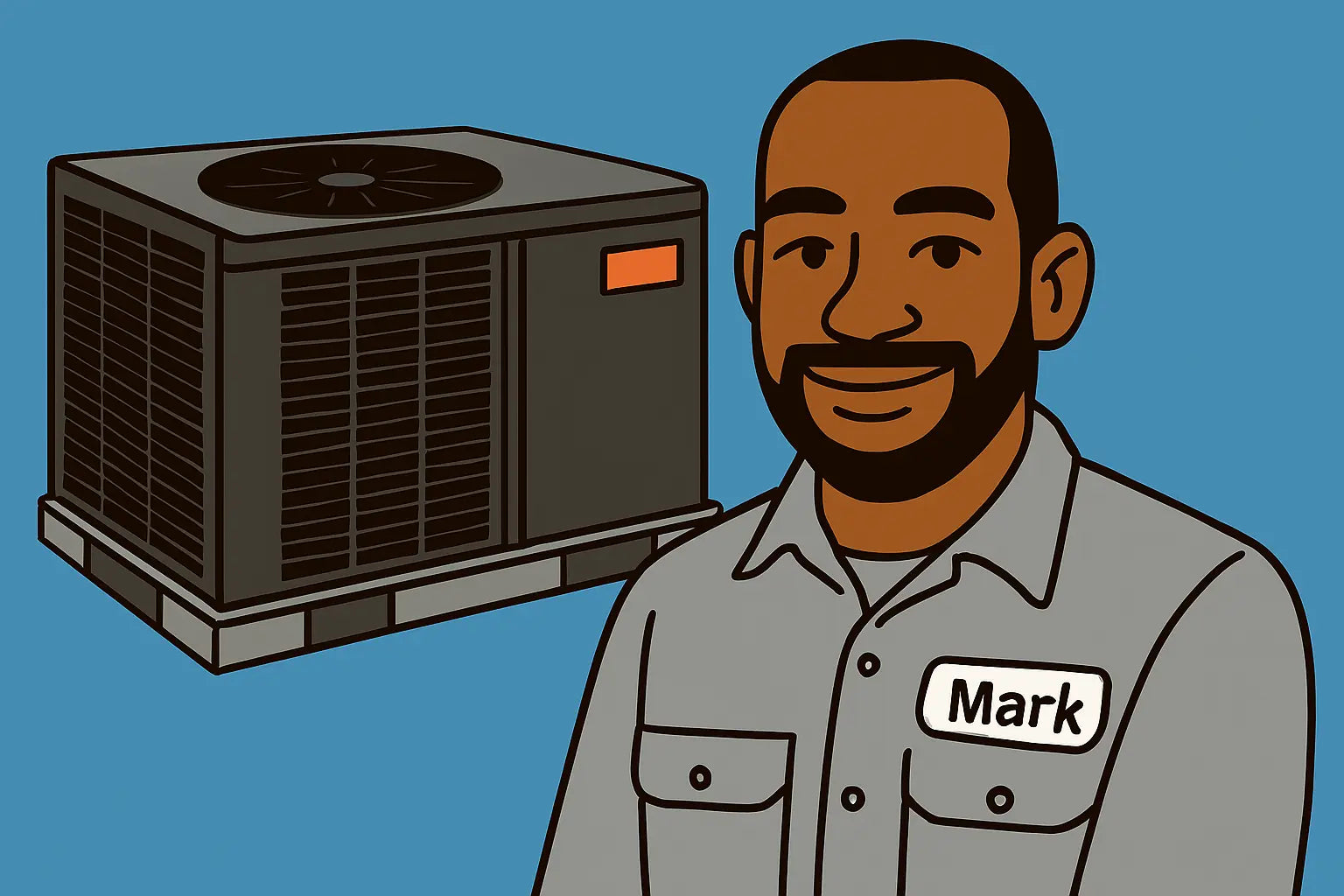Hello Everyone!
Hey folks, Mark here! If you’re staring down your Goodman GPCH33631 and thinking, “How the heck do I even start?”—relax. I’ve got your back. We’re diving headfirst into installing and troubleshooting this 3-ton horizontal air conditioner like a pro, without turning your living room into a science experiment. Along the way, I’ll sprinkle in some insider tips and link you to authoritative sources so you’re never left guessing.
Getting to Know Your Goodman GPCH33631
Before lifting a single tool, it’s smart to understand what’s under the hood. The GPCH33631 is a 3-ton horizontal air conditioner designed for residential use. It runs on 208/230V single-phase 60Hz and uses R-32 refrigerant, which is more environmentally friendly and efficient than older types. For a deeper look at why R-32 is a better choice for your system, check out this guide from AHRI.
Knowing the unit’s specs upfront makes installation and troubleshooting much smoother.
Preparing for Installation
Picking the Perfect Spot
The location of your AC unit can make or break efficiency. You’ll want a level surface, clear airflow, and at least a couple of feet of clearance around the unit. Avoid placing it near vents, windows, or direct sunlight where possible. Think of it like giving your AC some breathing room—it’s going to work better and last longer.
Tool Up
Here’s a handy checklist for what you’ll need:
-
Level and measuring tape
-
Screwdrivers and adjustable wrenches
-
Refrigerant lines and connectors
-
Electrical wiring components (double-check your local code requirements)
-
Condensate drain line
If you’re unsure about wiring or refrigerant handling, it’s worth checking out Hoffmann Brothers’ HVAC installation safety tips for guidance.
Know the Manual
I can’t stress this enough: the official Goodman installation manual is your Bible here. It covers everything from safety to wiring diagrams. Read it, then read it again.
Step-by-Step Installation
Positioning Your Unit
Place your GPCH33631 on a level surface. Use a level tool to ensure no tilt, because even a slight angle can mess with drainage and efficiency.
Connecting Refrigerant Lines
Attach the refrigerant lines carefully, following the manufacturer’s specifications. Improper connections can lead to leaks or reduced cooling performance. For a detailed refresher on HVAC line connections, HVAC.com has an excellent guide.
Electrical Hookup
Connect the electrical wiring in accordance with local codes. Ensure power is off at the breaker before touching any wires. Proper grounding is essential for safety and long-term reliability.
Condensate Drain Setup
The condensate drain ensures water doesn’t pool inside your unit or drip into your home. Install it according to the manual, checking that the line slopes downward and remains unobstructed.
Testing the System
Flip the breaker and fire it up! Check that air is blowing at the right temperature, and listen for unusual noises. A properly installed unit should hum quietly, without rattles or leaks. If things aren’t working, you might need to troubleshoot.
Troubleshooting Common Problems
Even with careful installation, issues happen. Here’s how to tackle them without breaking a sweat:
Air Not Cooling Properly
-
Low refrigerant? Check the levels and recharge if necessary.
-
Airflow blocked? Clean or replace filters, and make sure vents are open.
-
Coil issues? Dirty evaporator or condenser coils can reduce cooling efficiency. Learn more about common HVAC issues at EnergyStar.
Weird Noises
-
Rattling panels? Tighten screws and check for loose parts.
-
Humming or grinding? Debris may be in the fan blades or motor bearings might need attention.
Water Leaks
-
Often caused by a clogged condensate drain line. Clear the line and check for proper slope.
-
Check drip pans and seals to ensure there’s no blockage. For a visual guide, Service Champion has a useful walkthrough.
Electrical Glitches
-
Tripped breakers? Double-check your wiring and connections.
-
Fuses blowing? Make sure your unit isn’t overloading the circuit. You can review basic AC electrical troubleshooting here.
Maintenance Tips to Keep Your AC Healthy
-
Replace or clean filters every 1-3 months.
-
Inspect and clean coils annually.
-
Keep the area around the unit free of debris.
-
Check refrigerant levels and pressure as part of a seasonal tune-up.
Regular maintenance prevents small problems from becoming costly repairs. Think of it like giving your AC a little spa day every season.
Mark’s Insider Tips
-
Always double-check refrigerant and electrical connections; shortcuts here can cause headaches later.
-
Document your installation process—take photos of wiring and line setups. This helps if you need to troubleshoot in the future.
-
Keep a small toolkit dedicated to your AC system. Makes life easier for DIY checks or adjustments.
Wrap Up from Mark
And that’s a wrap, folks! Installing and troubleshooting your Goodman GPCH33631 doesn’t have to feel like rocket science. With a little preparation, attention to detail, and the tips I’ve shared, you can get your 3-ton horizontal AC running smoothly and efficiently. Remember to check your refrigerant levels, keep airflow clear, and don’t skip routine maintenance—it’s the difference between a system that hums quietly and one that gives you headaches.
If you’re ready to take the next step or need more details about the unit itself, you can check out the full product page here: Goodman Horizontal Air Conditioner GPCH33631. This link has all the specs, manuals, and purchasing info in one place.
Need more advanced installation tips for this AC? Visit: A Homeowner’s Step-by-Step Guide.
Stay cool, stay safe, and remember—your AC is only as good as the care you give it. Keep it clean, keep it tuned, and it’ll keep your home perfectly comfortable all year long.
Stay cool and keep it breezy,
- Mark 😎







